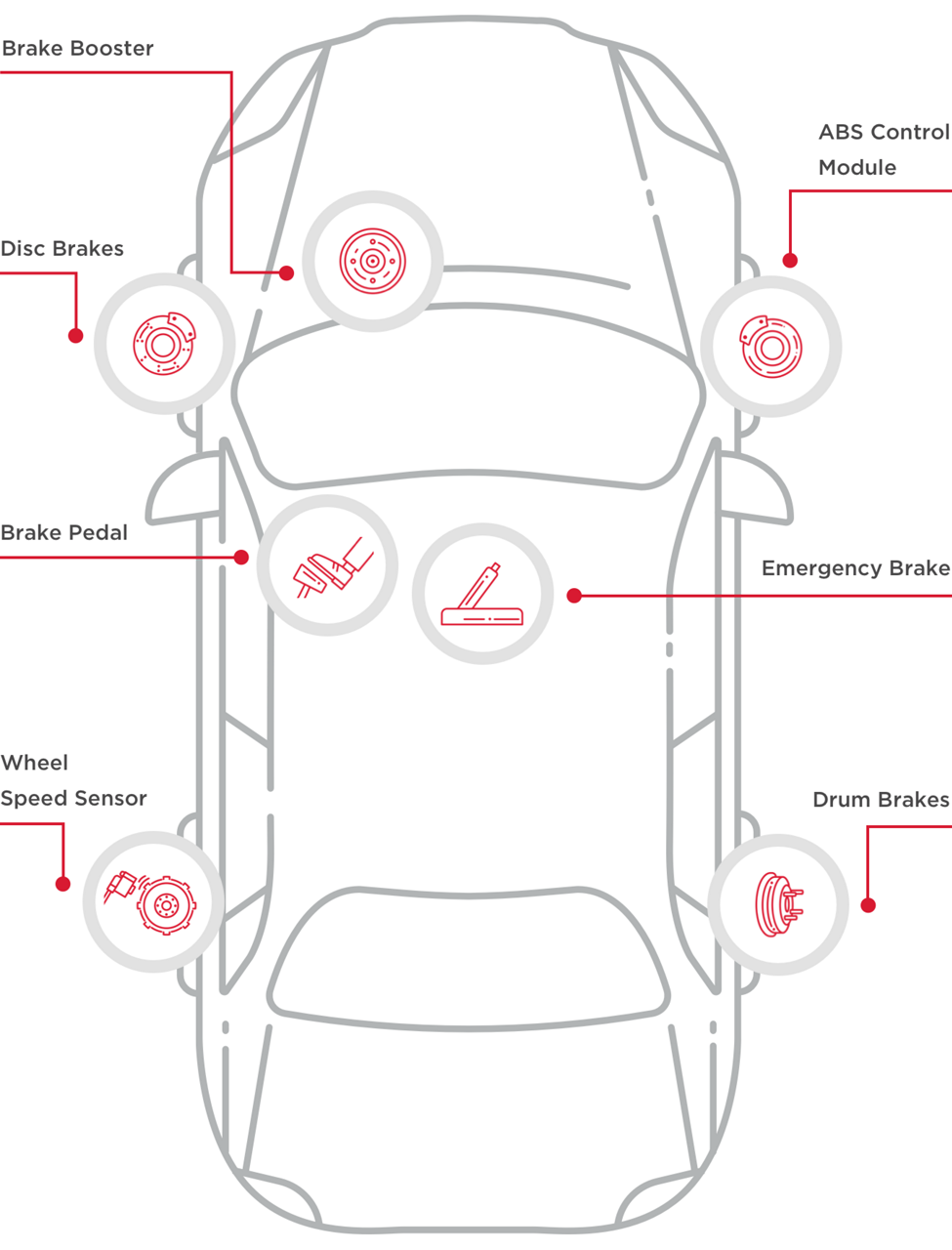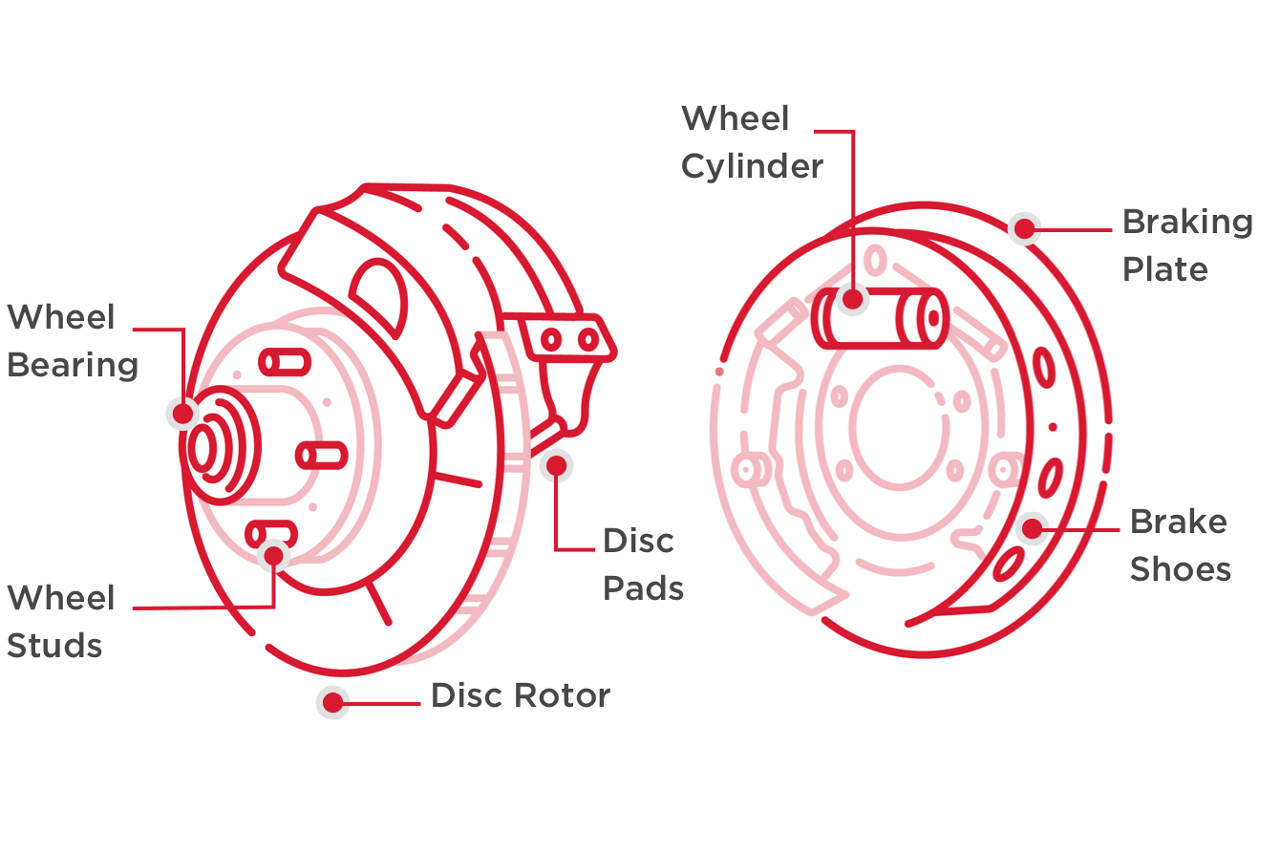What are the parts of the brake system?
Please note that there are different brake system configurations, as some vehicles use disc brakes on all four wheels while others use disc brakes on the front and drum brakes on the rear. This graphic outlines the brake system components that can be found on a passenger car/truck equipped with an anti-lock brake system.
One of the most important systems on your vehicle, you count on your brakes to safely bring your vehicle to a stop every time you press the brake pedal. To get a better idea of everything that is involved with stopping your vehicle, check out this infographic showing the major parts of a typical brake system in a passenger vehicle.

ABS Control Module
Found on vehicles with ABS brakes, the module performs diagnostic checks of the ABS braking system and determines when to send the correct pressure to each wheel to prevent the wheels from locking up.
Brake Booster
Reduces the amount of pressure needed for braking to allow any driver to operate the brakes. Uses engine vacuum and pressure to increase the force the brake pedal puts on the master cylinder.
Disc Brakes
Usually found on the front wheels, disc brakes feature brake pads that press against a disc (rotor) when the brake pedal is applied to stop the vehicle. The pads are attached to a brake caliper assembly that frames the rotor.
Drum Brakes
Located on the rear of the vehicle, drum brakes feature wheel cylinders, brake shoes and a brake drum. When the brake pedal is pressed, the brake shoes are forced into the brake drum by the wheel cylinders, bringing the vehicle to a stop.

Emergency Brake
Operates independently of the main brake system to keep vehicle from rolling away. Also known as a parking brake, hand brake and e-brake, the emergency brake is mainly used to keep the vehicle in place when parked.
Master Cylinder
Converts non-hydraulic pressure into hydraulic pressure that the wheel cylinders use to press the brake pads against the rotors to bring the vehicle to a stop.
Brake Pedal
Driver steps on the brake pedal to activate the brakes. A piston in the master cylinder moves when the pedal is pressed.
Wheel Speed Sensors
Part of the ABS brake system, speed sensors monitor the speed of each tire and sends the info to the ABS control module.
Disc and Drum Brakes

Learn more about quality brakes, find your car part, or find where to buy your auto part today.
The content contained in this article is for informational purposes only and should not be used in lieu of seeking professional advice from a certified technician or mechanic. We encourage you to consult with a certified technician or mechanic if you have specific questions or concerns relating to any of the topics covered herein. Under no circumstances will we be liable for any loss or damage caused by your reliance on any content.